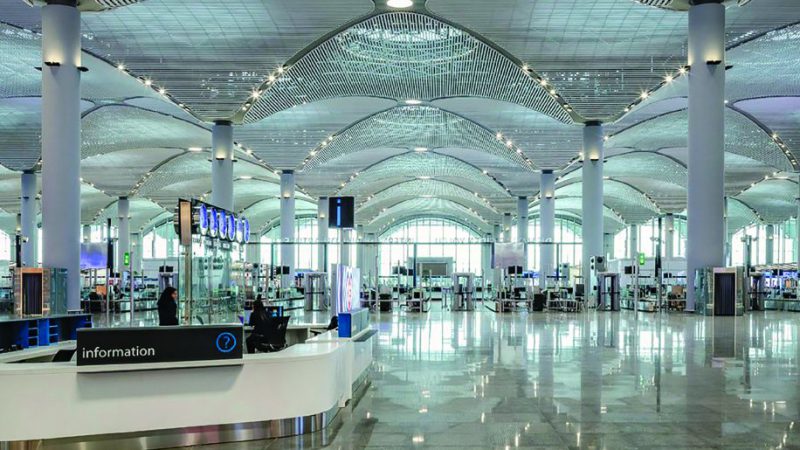New Istanbul Airport Guide
Here’s a look at all you can expect to discover when you fly into the world’s newest super-hub
June 29, 2019

The massive transfer of operations from Ataturk Airport to the new Istanbul Airport is now complete. The move took place over 33 hours from April 5 to April 6, and saw Turkish Airlines alone shift 47,300 tons of equipment across the city.After several delays, the airport is now fully operational and has taken on Ataturk’s old IATA code IST. (Ataturk will continue to see non-commercial flights, and is now listed ISL). Its annual capacity is currently 90 million, and is expected to rise to as much as 200 million over the coming years.
Getting There
The airport is around 25 miles northwest of central Istanbul, on the European side. A metro is currently under construction that will allow 25-minute journeys to the city center as well as links to other districts – but that’s not opening until next year at the earliest.In the meantime, travelers have to choose between a taxi (Uber operates in the city, and a fare from the central Fatih district should cost between $25 and $30) and the ‘Havaist’ bus network that runs on 20 lines to the airport.
Getting Around
The airport sits on a massive 30 square miles (by comparison, Atlanta Hartsfield-Jackson covers a little over seven square miles). Though only one terminal is currently open, it is one of the biggest in the world, over 15 million square feet with four international piers and one domestic. You might therefore be advised to download the airport app, which offers features such as real-time journey information, indoor navigation, access to WiFi, information on shops and food and beverage outlets, and transport options and updates. Just bear in mind you’re likely to do a lot of walking.The airport says it will also have “talking objects” to help passengers to find their way, and use robots, artificial intelligence, facial recognition and other technology to speed up airport processes. That will include 36 self-service bag drop points across two check-in islands, 566 check-in points, biometric passport checkpoints and electronic boarding gates, with use of facial recognition technology expected to expand over the coming years.
Lounges
The IGA Lounge (IGA being the airport’s operators) is open 24 hours a day and covers 47,500 square feet with room for 584 people. It features two meeting rooms, four quiet rooms and a kids’ room. Amenities include billiard tables, game areas, private cinema rooms and showers.Meanwhile Turkish Airlines offers a Business Lounge, Miles and Smiles Lounge and a Domestic Lounge.
Leisure
There are 800,000 square feet of retail and duty free space divided into seven sections: Fashion Garden; Family Palace; Style Beach; Icon Gulf; High and Lux Hills Fashion; High and Lux Hills Jewelry and Watch; and High and Lux Hills Fashion and Accessories. There should be at least 100 shops open by the end of July.The food court is spread over 366,000 square feet and includes a bakery, coffee shops, fast food, full-service restaurants, bars and vending machines. Outlets include Sbarro, Taste of Anatolia, Yo-Sushi and Simit Sarayı.
Hotels
Yotel has opened two properties at the airport – a 277-room landside hotel and 174-room airside one, with the latter only available to international passengers and bookable for a minimum of four hours. No more openings have been announced yet. A Park Inn by Radisson is around a 15-minute drive away and has various meeting and event facilities.
Next steps
The airport is set to grow well beyond its current size, with several phases mapped out for future development. So what can we expect to see, and when?The plan is for a four-zone Airport City, a mixed-use development with direct connections to the main terminal, according to an IGA spokesperson. This will include an aviation academy and university, hotels, retail, serviced apartments, office space, cultural and conference spaces, museum, exhibition spaces and a hospital facility.• The next phase of construction is due to be completed at the beginning of 2020 with the completion of a third runway, the opening of the ‘Airport City’ Core Zone and the launch of the new metro lines.• The beginning of 2022 is targeted for the completion of a fourth runway and a second ATC tower.• By the end of 2022 the airport should have a second terminal building, a fifth runway, a third ATC tower and other supporting facilities.• The entire project aims to wrap up by 2028, with the completion of a sixth runway and a satellite terminal




